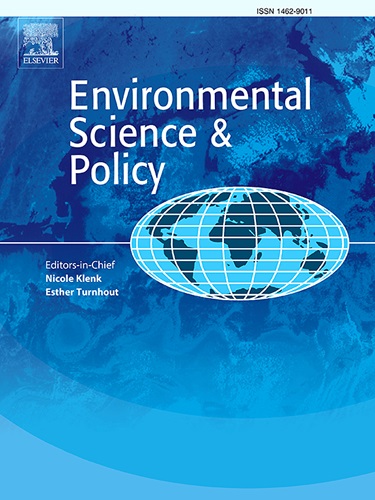在与气候相关的时间尺度上,碳封存应该是永久性的
IF 5.2
2区 环境科学与生态学
Q1 ENVIRONMENTAL SCIENCES
引用次数: 0
摘要
尽管规则和标准相互矛盾,但持久性碳清除信用额度的市场仍在扩大。一个悬而未决的主要问题围绕着自动减赤的持久性及其意义。我们从“代际公平”和“污染者自付”的原则中得出结论,认为在与气候相关的时间尺度上,封存应该是永久性的,而地球科学已经确定,封存的时间尺度超过1万年。这比碳信用额度的典型持久性要长得多。从这个角度来看,我们研究了必须通过永久封存或一系列临时储存来保证碳去除的持久性的影响。我们将回顾与气候相关的持久性定义的科学基础。我们会问为什么我们应该关心,谁将从不保证永久性中获益,谁将承受后果,谁将为永久性买单,以及谁将做出决定。本文章由计算机程序翻译,如有差异,请以英文原文为准。
Carbon sequestration ought to be permanent on climate-relevant timescales
Markets for durable carbon removal credits are expanding despite conflicting rules and standards. A major unresolved issue surrounds the permanence of sequestration and what it means. We draw from the principles of ‘intergenerational equity’ and the ‘polluter-pays’ to argue that sequestration ought to be permanent on climate-relevant timescales which geoscience has determined to be in excess of 10000 years. This is far longer than the typical durability of carbon credits. In this perspective, we examine the implications of having to guarantee the permanence of carbon removal either by permanent sequestration or by a sequence of temporary storage. We will review the science underlying the definition of climate-relevant permanence. We will ask why we should care, who gets to reap the benefits from not guaranteeing permanence, who will suffer the consequences, who pays for permanence, and who gets to decide.
求助全文
通过发布文献求助,成功后即可免费获取论文全文。
去求助
来源期刊

Environmental Science & Policy
环境科学-环境科学
CiteScore
10.90
自引率
8.30%
发文量
332
审稿时长
68 days
期刊介绍:
Environmental Science & Policy promotes communication among government, business and industry, academia, and non-governmental organisations who are instrumental in the solution of environmental problems. It also seeks to advance interdisciplinary research of policy relevance on environmental issues such as climate change, biodiversity, environmental pollution and wastes, renewable and non-renewable natural resources, sustainability, and the interactions among these issues. The journal emphasises the linkages between these environmental issues and social and economic issues such as production, transport, consumption, growth, demographic changes, well-being, and health. However, the subject coverage will not be restricted to these issues and the introduction of new dimensions will be encouraged.
 求助内容:
求助内容: 应助结果提醒方式:
应助结果提醒方式:


